
갑상선 기능 저하증이 있는 사람을 알고 있을 것입니다. 사실, 당신은 자신을 가질 수 있습니다. 인간의 갑상선 기능 저하증의 징후에는 정상 이하의 체온, 차가운 손과 발, 체중 증가, 탈모 및 지속적인 피로가 포함됩니다. 많은 개들도 갑상선 기능 저하증을 앓고 있기 때문에 사람만이 이 장애로 고통받는 것은 아닙니다. 그들은 무기력해 보이고, 정상 또는 정상 이하의 음식을 먹으면서 체중이 증가하고, 따뜻함을 추구하고, 피부와 코트 상태를 발전시킬 수 있습니다. 그러나 갑상선 기능 저하증은 다른 증상도 유발하며 정확한 진단을 위해서는 고정관념에서 벗어나 생각해야 할 수 있습니다.
고도로 훈련된 수색 구조견 로건을 생각해 보십시오. 그는 세 살 때 너무 두려워서 더 이상 일할 수 없고 은퇴할 예정이었습니다. 민첩한 개 브로디는 갑상선 검사 결과가 정상이었지만 경쟁이 느렸고 지속적인 중이염이 있었습니다. 알래스카 Malamute인 Brewser는 공격적이 되어 식욕을 잃었습니다. 완벽한 체중의 Eurasier인 Ruq는 성격이 급하고 무기력해졌으며 눈꺼풀이 안쪽으로 굴러서 교정하는 수술이 필요한 상태인 엔트로피가 발생했습니다.
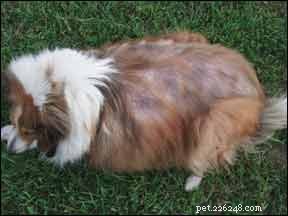
이 개를 치료한 수의사는 검사 결과가 "정상"이고 과체중이 아니거나 아름다운 털을 가지고 있기 때문에 갑상선 기능 저하증이 아닐 수 있다고 주장했습니다. 그러나 수의사는 실수했습니다. 갑상선 기능 저하증을 치료한 결과 이 개들은 건강을 되찾았습니다.
대사 호르몬
기관 양쪽의 목구멍에 있는 나비 모양의 갑상선은 신체의 신진대사를 조절하는 호르몬을 생산하고 저장합니다. 갑상선이 너무 활동적이거나 충분히 활동적이지 않으면 다양한 건강 문제가 발생합니다. 인간과 개에서 갑상선 기능 저하증은 가장 흔한 내분비 장애입니다. 고양이와 소수의 인간은 갑상선 기능 항진증에 걸리기 쉽습니다. 개의 갑상선 기능 항진증은 너무 많은 갑상선 보충제가 제공되지 않는 한 드물지만 갑상선암이나 낭성 결절과 관련될 수 있습니다.
갑상선은 활성 형태인 T3(트리요오드티로닌)와 비활성 형태인 T4(티록신)의 두 가지 형태의 갑상선 호르몬을 생성합니다. T4가 조직에 흡수되면 T3로 전환되지만 순환하는(총) T4의 대부분은 흡수에 사용할 수 없습니다. 사용 가능한 부분을 무료 T4라고 합니다. 개의 경우 신체 T3의 약 절반은 갑상선에서 생성되고 나머지 절반은 다른 조직에 의해 T4에서 전환됩니다.
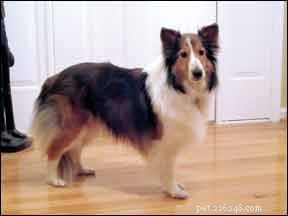
T4의 생산은 두개골 기저부에 있는 완두콩 크기의 작은 샘인 뇌하수체에 의해 조절됩니다. 뇌하수체는 많은 호르몬 기능을 제어하기 때문에 "마스터 샘"으로 알려져 있습니다. 무엇보다도 갑상선 자극 호르몬 또는 TSH를 생성하여 갑상선에서 T4를 방출합니다.
신체의 모든 세포는 갑상선 호르몬에 반응하며 낮은 수치는 여러 신체 시스템에 영향을 줄 수 있습니다. 거의 모든 송곳니의 갑상선 기능 저하증 사례는 원발성이며, 이는 일반적으로 염증, 퇴행 또는 종양에 의한 갑상선 손상으로 인해 발생합니다.
갑상선 기능 저하증 징후
갑상선 기능 저하증은 많은 신체 시스템에 영향을 미치기 때문에 임상 징후는 다양하고 비특이적이며 종종 발달 속도가 느립니다. 가장 고전적인 징후(심각한 체중 증가, 혼수, 추위 불내성)는 갑상선의 70% 이상이 파괴될 때까지 나타나지 않습니다. 행동 변화(집중력 부족, 공격성, 수동성 또는 두려움), 칼로리 제한에도 불구하고 약간의 체중 증가, 명백한 음식 알레르기 또는 과민증과 같은 다른 증상이 더 일찍 나타날 수 있습니다.
갑상선 기능 저하증 개의 88%가 건조, 비늘 또는 기름진 피부(지루)를 포함한 만성 피부 질환을 앓고 있습니다. 얇거나 거칠고 건조한 코트; 과도한 탈모; 그리고 불쾌한 피부 냄새. 갑상선 기능 저하증의 추가 영향으로는 서맥(느린 심장 박동수), 변비, 설사, 만성 피부 및 귀 감염, 각막 영양 장애 또는 궤양, 여성 불임 등이 있습니다.
갑상선 기능 저하증 강아지의 전형적인 소견 중 하나는 특히 얼굴과 머리의 조직이 두꺼워지는 것입니다. 두꺼워진 피부는 주름을 만들고 "비극적인 얼굴"이라고 합니다. 이러한 비후는 안면 신경과 같은 다른 조직에서도 발생하여 신경 장애를 일으킬 수 있습니다.

자가면역 갑상선염은 다른 자가면역 질환과 함께 발생할 수 있습니다. 다음은 갑상선 기능 저하증의 증상으로 간주되지 않지만 갑상선 기능 저하증과 거대식도, 후두 마비, 애디슨병, 중이염, 십자 인대 파열, 췌장염, 백반증(색소 손실), 이유 없는 공격성 및 발작 장애의 갑작스러운 발병 사이에 연관성이 있을 수 있습니다. .
발작이 있는 개의 77%가 갑상선 기능 저하증일 수 있지만 이러한 상태 사이의 연관성은 불분명합니다. 한 연구에서는 갑상선 기능 장애와 발작 사이, 그리고 갑상선 기능 장애와 개 대 인간 공격성 사이에 중요한 관계가 있음을 보여주었습니다. 이러한 사례 중 95건에서 치료를 추적한 결과 개의 61%에서 상당한 행동 개선이 나타났습니다.
잠재적 원인
개의 갑상선 기능 저하증의 주요 원인은 신체 자체의 면역 체계에 의한 손상입니다. W. Jean Dodds, DVM, The Canine Thyroid Epidemic:Answers You Need for Your Dog의 저자는 송곳니 갑상선 문제를 전문으로 합니다. Dodds 박사는 송곳니 갑상선 기능 저하증 환자의 80% 이상이 인간의 하시모토 갑상선염과 유사한 상태를 초래하는 유전성 자가면역 장애가 있다고 추정합니다. 강아지에게 흔한 림프구성 갑상선염은 면역계가 실수로 갑상선을 공격하여 갑상선에 염증이 생기는 질환입니다.
나머지 사례의 대부분은 특발성 여포 위축으로 인해 발생하며 염증의 증거 없이 갑상선이 변성(특발성은 원인을 알 수 없음을 의미), 면역 매개 파괴의 최종 결과일 수 있습니다.
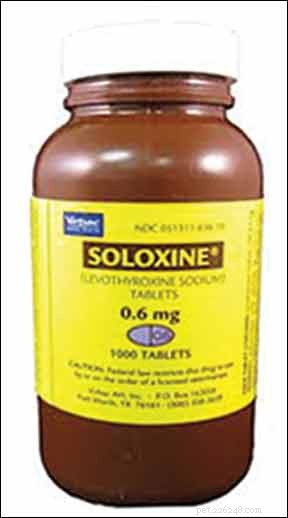
Dodds 박사는 오늘날의 송곳니 갑상선 기능 저하증의 원인이 잘못된 번식 관행, 빈번한 예방 접종, 면역 억제 약물, 영양 결핍 식단, 환경 독소에 대한 노출을 비난합니다.
갑상선이 기능을 하려면 요오드가 필요하기 때문에 요오드 결핍은 갑상선 기능 저하증에 기여할 수 있습니다. 그러나 대부분의 상업용 개 사료에는 적절한 수준의 요오드가 포함되어 있으므로 집에서 만든 요오드가 부족한 식단을 먹이지 않는 한 이런 일이 발생하지 않을 것입니다. 과잉보충으로 인한 과도한 요오드는 갑상선 기능을 억제하고 심지어 자가면역 갑상선염에 기여할 수 있습니다. 이미 요오드가 함유된 상업용 식단에 다시마를 추가하지 마십시오. Dodds 박사에 따르면, 개가 임신 중이거나 수유 중인 동안 시판 식품에 다시마를 첨가하여 발생하는 과도한 요오드는 태아 또는 신생아의 갑상선을 파괴할 수 있습니다.
드물기는 하지만 일부 개는 갑상선 호르몬 생성을 방해하는 선천적 결함을 가지고 태어납니다. 이 상태는 Giant Schnauzer와 Boxers에서 볼 수 있습니다.
갑상선 종양은 갑상선 기능 저하증의 또 다른 흔하지 않은 원인이지만 종양이 갑상선 양쪽 엽에 영향을 미치고 갑상선이 완전히 파괴되지 않는 한 호르몬 분비는 일반적으로 정상으로 유지됩니다.
속발성 갑상선 기능 저하증은 뇌 질환이 갑상선 활동의 조절을 방해하는 경우 또는 갑상선이 방사선 요법, 외과적 제거 또는 갑상선 활동에 영향을 미칩니다.
진단
갑상선 기능 저하증을 진단하기 위해 수의사는 총 T4, 유리 T4, 총 T3, 유리 T3, TSH 및 자가면역 갑상선염을 나타내는 자가항체 T4AA, T3AA 및 TgAA를 포함한 여러 갑상선 기능 검사에 의존합니다.
갑상선글로불린(또는 Tg) 자가항체는 T3 또는 T4 자가항체가 존재하는 경우의 약 92%에서 높을 것이므로 TgAA에 대한 검사를 대신하여 치료에 대한 반응을 모니터링할 수 있습니다. 갑상선 글로불린 자가항체가 있지만 갑상선 기능 저하증의 징후가 없는 개의 약 20%는 1년 이내에 명백한 징후로 진행됩니다. 검사 후 45일 이내에 광견병 예방 접종을 하면 잘못된 결과가 나올 수 있습니다. 검사 90일 전까지 갑상선 보충제를 투여하면 결과가 감소합니다.
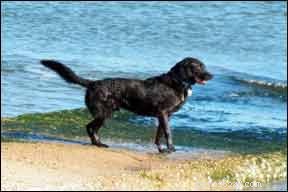
인간의 갑상선 기능 저하증 진단에 일반적으로 사용되는 TSH 검사는 개에서 신뢰할 수 없습니다. 낮은 유리 T4와 결합된 높은 TSH는 진단을 확인하는 데 도움이 되지만 정상 또는 낮은 TSH가 진단을 배제하지 않습니다. 자가항체의 존재가 결과를 잘못 높일 수 있기 때문에 총 T4 선별 검사는 갑상선 기능 저하증을 배제하는 데 사용할 수 없습니다. 가장 정확한 테스트는 Equilibrium Dialysis의 Free T4이지만 그 자체로는 불완전한 그림을 제공합니다.
T3 결과는 갑상선 기능 저하증 진단에 신뢰할 수 없습니다. T3 수치는 일반적으로 갑상선 기능 저하증 개에서 정상입니다. 높은 수치는 T3 자가항체로 인해 발생할 수 있습니다. 낮은 수치는 종종 비갑상선 질환(NTI)과 관련이 있습니다.
정상적인 T4 검사 결과는 연령, 크기 및 품종에 따라 다를 수 있습니다. 노령견, 대형견, 특히 시력 사냥개에서는 정상 수치가 더 낮으며, 발작 약물, 코르티코스테로이드, 비스테로이드성 항진균제로 치료할 수 있는 것처럼 관련 없는 질병도 갑상선 수치를 감소시킬 수 있습니다. -염증제, 베타 차단제, 분리 불안을 치료하는 데 사용되는 약물 및 일부 항생제. 갑상선 호르몬의 순환 혈액 수치는 이러한 호르몬의 세포 및 조직 수치를 반영하지 않을 수 있기 때문에 검사 결과는 정상이지만 임상 징후가 있는 개는 갑상선 보충제의 혜택을 받을 수 있습니다.
동시에 존재하지 않는 갑상선 기능 저하증을 치료하는 것은 새로운 문제를 일으키기 때문에 정확한 진단이 중요합니다.
유갑상선증후군(SES)은 종종 갑상선기능저하증으로 오진됩니다. SES에서 정상적으로 기능하는 갑상선(유갑상선)이 있는 개는 호르몬 수치에 영향을 줄 수 있는 외상, 스트레스, 부상 또는 잘못된 식단으로 인해 갑상선 호르몬 수치가 감소했습니다. 갑상선은 스트레스, 질병 또는 부상에 반응하여 갑상선 호르몬 분비를 감소시켜 신체의 신진대사 속도를 늦추고 에너지를 보존합니다. SES의 근본 원인을 확인하기 어려울 수 있기 때문에 이 보호 메커니즘을 갑상선 기능 저하증으로 오인할 수 있습니다. 갑상선 수치를 낮출 수 있는 비갑상선 질환의 예로는 쿠싱병, 당뇨병, 만성 신부전, 간 질환, 애디슨병 등이 있습니다. 이러한 질병을 치료하면 명백한 갑상선 기능 저하증 문제가 저절로 해결됩니다.
다른 검사 결과는 진단을 확인하는 데 도움이 될 수 있습니다. 말기 갑상선 기능 저하증이 있는 개의 75% 이상이 12시간 단식 후 채혈한 혈액에서 콜레스테롤 수치가 높지만 이는 질병의 초기 단계에서는 나타나지 않을 수 있습니다. 약 40%가 빈혈입니다. 간 효소(지방 대사 변화로 인한 것으로 추정) 또는 크레아틴 키나제(CK)가 때때로 상승합니다. 다른 요인들이 이러한 검사 결과에 영향을 미칠 수 있기 때문에 그 자체로 결정적이지는 않지만 갑상선 기능 저하증 진단을 뒷받침합니다.
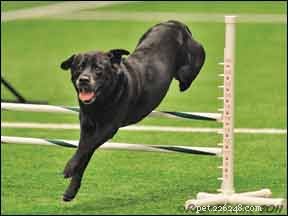
날씨도 결과에 영향을 미칠 수 있습니다. 더운 여름날 수의사에게 가는 것은 일시적으로 총 T4 수치를 감소시켜 잘못된 갑상선 기능 저하증 결과를 유발할 수 있습니다.
진단이 확실하지 않으면 혈액을 Hemopet의 사업부인 Dr. Dodds의 Hemolife Laboratory로 보낼 수 있습니다. Dodds 박사는 또한 개 소유자 및 수의사와 함께 다른 실험실의 테스트 결과를 검토할 것입니다. 그녀는 다양한 품종과 상황에 대한 정상 검사 결과 범위를 추적하여 낮은 검사 결과가 갑상선 기능 저하증을 나타낼 수 있는지 여부를 판단하는 데 도움이 될 수 있습니다.
진단에 대한 질문이 있는 경우 최소 6주 동안의 치료 시험을 사용할 수도 있지만, 진정한 갑상선 기능 저하증이 아닌 SES가 있는 개에서 개선이 나타날 수 있습니다.
치료
갑상선 기능 저하증 개는 티록신(T4) 치료에 빠르게 반응하여 첫 1~2주 동안 태도, 기분, 정신적 각성, 에너지, 활동 수준, 식욕 및 공격적인 행동이 개선됩니다. 피부와 털 문제는 보통 4주에서 6주 이내에 개선되는 반면, 모발 재성장은 4개월 또는 그 이상이 소요될 수 있습니다. 대부분의 경우 갑상선 약물은 평생 필요합니다.
약물은 음식과 함께 또는 없이 주어질 수 있지만 음식이 흡수를 방해하고 티록신이 콩과 칼슘에 결합하기 때문에 항상 같은 방식으로 투여해야 합니다. 많은 수의사들은 적어도 식사 1시간 전이나 식후 3시간 후에 갑상선 약물을 투여할 것을 권장합니다. 식사와 함께 보조제를 투여했을 때 증상이 해결되지 않거나 T4 수치가 낮게 유지되는 경우 적절한 흡수를 위해 별도로 투여해야 합니다.
솔록신(레보티록신 나트륨)은 갑상선 기능 저하증이 있는 개에게 가장 일반적으로 처방되는 약물입니다. (Synthroid는 인간 제제와 동일합니다.) 갑상선 보충제는 대사율을 증가시키므로 심각한 심장병이나 고혈압(고혈압)이 있는 개는 주의해서 치료해야 합니다.
일반적인 티록신 시작 용량은 12시간마다 이상적인 체중 10파운드당 0.1mg입니다(개에서 약물의 반감기가 짧기 때문에 매일 2회 투여하는 것이 가장 좋습니다). 작은 개는 크기에 비해 더 많은 양을 필요로 하는 반면, 사이트하운드는 더 적게 주어야 합니다. 환자가 당뇨병이나 간, 신장 또는 심장에 영향을 미치는 질병이 있는 복잡한 경우에는 표준 시작 용량의 25%로 더 천천히 시작하여 3개월에 걸쳐 점차적으로 증량해야 합니다.
수의사들은 개가 제네릭 및 브랜드 약품에 반응하는 방식의 차이를 보고합니다. 많은 사람들이 흡수와 생체 이용률의 차이 때문에 제네릭 사용에 대해 경고합니다. 다행히도 브랜드 이름의 갑상선 약은 한 달에 몇 달러로 저렴하기 때문에 제네릭을 사용하는 데 따른 경제적 이점은 거의 없습니다. 개가 특정 갑상선 약물로 안정되면 한 브랜드에서 다른 브랜드로 전환하는 것보다 해당 제품을 계속 사용하는 것이 좋습니다.
후속 T4 테스트는 복용량이 정확한지 확인합니다. T4 수치는 알약을 투여하기 직전에 가장 낮고 투여 후 4-6시간 후에 가장 높기 때문에 검사 시기가 중요합니다. 이 검사는 일반적으로 치료 시작 후 4-8주 후에 실시합니다. TSH 수준도 확인할 수 있습니다. 높은 TSH는 복용량이 너무 낮음을 나타냅니다. (정상적이거나 낮은 TSH 수치는 의미가 없습니다.)
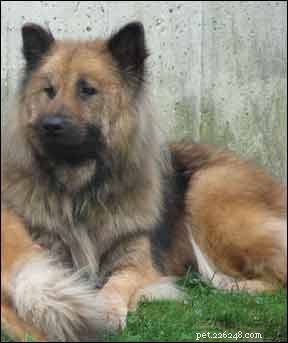
너무 높은 복용량의 징후에는 갈증, 음주 및 배뇨 증가가 포함될 수 있습니다. 체중 감량; 설사; 헐떡임; 신경질 또는 불안; 안절부절; 페이싱; 과잉행동; 심박수 증가
초기 투여량을 확인한 후 개가 잠정적으로 새로운 증상을 나타내지 않는 한 연간 모니터링이 권장됩니다. 개가 일정 기간 동안 갑상선 보충제를 먹었고 진단에 대해 질문이 있는 경우 검사 결과가 유효하기 전에 최소 2개월 동안 치료를 중단해야 합니다. 갑상선 보충제를 갑자기 중단해도 명백한 해는 없습니다. 가능하면 갑상선 수치를 방해하는 것으로 알려진 약물을 중단해야 합니다.
보완 요법
티록신은 지시대로 복용하면 안전하지만 일부 간병인은 합성 약물을 피하고 가능하면 천연 제품을 사용하려고 합니다. 소 또는 돼지의 갑상선에서 만든 천연 갑상선 추출물은 인체 의학에 사용됩니다(Armour Thyroid, Westhroid, Nature-Throid 및 캐나다 제품 ERFA는 모두 좋은 선택입니다). 그러나 이러한 제품에는 T4 및 T3 갑상선 호르몬이 모두 포함되어 있기 때문에 복용량은 조정이 필요합니다.
천연 갑상선 복용량은 곡물(60 mg =1 곡물)로 측정되며 1 곡물 천연 갑상선 추출물은 74 mcg(0.074 mg) 합성 티록신과 같습니다. 따라서 티록신 0.1mg은 천연 갑상선 약 1.5알, 티록신 0.2mg은 약 3알, 티록신 0.3mg은 천연 갑상선 약 4알과 같습니다.
건조된 갑상선 추출물은 합성 물질보다 비용이 더 많이 들고 더 많은 양이 필요할 수 있습니다. T3와 T4를 모두 포함하고 있기 때문에 T4를 T3로 전환할 수 없는 소수의 개를 도울 수 있습니다.
갑상선 호르몬이 제거된 갑상선 물질을 함유한 비처방 갑상선 보조제도 있습니다. Dodds 박사는 이러한 제품이 실제 송곳니 갑상선 기능 저하증의 경우 갑상선 호르몬 약물을 대체할 수는 없지만 처방된 용량을 줄이는 데 성공적으로 사용되었으며 아직 완전히 갑상선 기능 저하증이 아닌 갑상선 기능이 저하된 개를 도울 수 있다고 말합니다.
Dodds 박사는 Standard Process Thytrophin PMG 및 Standard Process Canine Thyroid Support를 권장합니다. 다른 성분들 중에서 선 물질을 포함하는 다른 제품에는 Metabolic Advantage Thyroid Formula, Thyroid Glandular, Bovine Thyroid Health 및 Thyrosine Complex가 있습니다(19페이지의 리소스 목록 참조).
영양은 갑상선 기능 저하증을 치료하는 핵심 요소이며 고품질 식단이 중요합니다. 갑상선 건강에 가장 중요한 미네랄은 최적의 양으로 존재해야 하는 요오드입니다.
NRC(National Research Council)는 체중이 10파운드인 개의 경우 매일 약 100mcg의 요오드, 50파운드의 개의 경우 300mcg, 100파운드의 개의 경우 500mcg의 요오드를 권장합니다. 요오드화 소금에는 1/4티스푼당 약 105mcg의 요오드가 들어 있습니다. (정제되지 않은 바다 소금에는 미량의 요오드가 포함되어 있지만 중요한 요오드 공급원은 아닙니다.) 요구르트, 계란 및 생선에는 요오드가 포함되어 있지만 이 필수 미네랄의 가장 중요한 식품 공급원은 해조류입니다.
유명한 약초학자 Juliette de Bairacli Levy는 다시마를 개와 다른 동물의 필수 보충제로 간주했습니다. “나는 1930년대 초 학생 때 수의학계에 해초를 소개했습니다.”라고 그녀는 썼습니다. “그때는 멸시를 받았지만 지금은 전 세계적으로 매우 인기가 있습니다.” 그녀는 다시마와 기타 바다 채소가 눈, 코, 손톱에 검은색을 띠게 하고, 모발 성장을 촉진하고, 뼈를 튼튼하게 발달시킨다고 믿었습니다.
집에서 만든 식단에 다시마나 다른 해조류를 추가할 때 오염된 물에서 자라는 식물이 중금속에 오염될 수 있으므로 출처를 반드시 고려해야 합니다. 2007년 University of California/Davis의 연구원들은 테스트한 다시마 보충제 9개 중 8개에 비정상적인 수준의 비소가 함유되어 있음을 발견했습니다. 라벨에서 유기농 인증을 찾아보고 중금속 및 기타 오염 물질에 대한 테스트와 관련하여 제조업체에 확인하십시오.
다시마 및 기타 바다 채소의 요오드 함량은 매우 다양하기 때문에 집에서 만든 사료를 먹인 개에 대한 NRC의 일일 권장량을 제공하는 단일 복용량은 없습니다. 라벨에 해조류 제품의 요오드 함량이 표시되어 있지 않으면 제조업체에 해당 정보를 문의하세요.
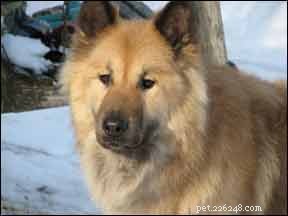
Note that raw cruciferous vegetables (members of the cabbage family) can suppress thyroid function if fed in quantity. These include broccoli, Brussels sprouts, cauliflower, cabbage, kale, collard greens, and more. Another ingredient to avoid is soy, which contains isoflavones that can block the activity of thyroid peroxidase (TPO), the enzyme that helps convert T4 to T3.
A selenium deficiency can slow the conversion of T4 to T3, a problem unlikely to occur in dogs on commercial pet food but possible with home-prepared diets. Ocean fish, turkey, chicken, and beef are all significant sources of selenium, but the mineral’s wonder food is the Brazil nut. The NRC recommends 37 mcg selenium daily for 10-pound dogs and up to 207 mcg daily for dogs weighing 100 pounds. Brazil nuts contain 70 to 90 mcg selenium each, so a single Brazil nut given every few days to a small dog or every day to a large dog can be inexpensive insurance for dogs fed a home-prepared diet that might be low in selenium. Like most minerals, too much selenium can be dangerous, so don’t oversupplement.
Because adrenal exhaustion or fatigue can impair thyroid production, adrenal support supplementation may result in a marked improvement.
Diagnosing Outside the Box
It would be wonderful if every hypo-thyroid dog presented the same obvious symptoms and veterinarians never missed a diagnosis. But hypothyroid dogs come in all shapes, sizes, and conditions, and you can’t always tell just by looking. Here are seven dogs who demonstrate the wide variety of symptoms that an underactive thyroid can cause.
-Logan:Too Scared to Work
Logan is an IPWDA-certified Trailing K9 (search and rescue dog) active with ATT Search and Rescue Dogs of Virginia. A 7-year-old Golden Retriever/Malinois-mix, he lives with Joanne Kuchinski and Barry Wood in Danville, Virginia.
“After three years of training,” Kuchinski says, “Logan went from being a working fool to being afraid to get out of the car. He would sit and shake. He was scared of everything.”
She was about to retire Logan from search and rescue work when she had his thyroid tested. The result was very low normal. “The veterinarian brushed me off,” she says, “but from my research I knew that low normal might be the issue. I went to another vet who listened to my concerns and put Logan on thyroid medication. Two weeks later Logan attended a seminar and was almost back to his old self. He worked in a crowded parking lot (the same one he sat and shook in) like a champ.
“That was in February of last year,” she continues. “In May he took his International Police Working Dog Association trailing test during a thunder storm and passed it. The instructor, who saw him before and after his thyroid treatment, could not believe it was the same dog. Before his treatment we went to the beach because Logan loves water, but all he did was hide under a picnic table. The following year we went back to the same beach and he ran in the surf, chased a ball in the waves, and enjoyed himself racing all around.”
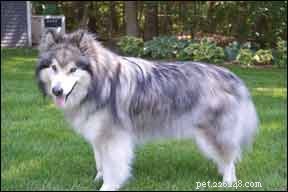
-Brodie:Slow Agility Dog?
Brodie, a Labrador Retriever, has a long string of titles after his registered name (Weymouth’s Scottish Brodie, AXP, OJP, NFP, NAC, NCC, CTL3-R, CTL4-F, CTL3-H, CGC), most from agility, the sport in which he’s competed for eight years.
Despite all his titles, says Laura Williams of Old Bridge, New Jersey, Brodie was always slow, and he weighed more than she liked. “In addition,” she says, “he always seemed to have dirty ears no matter how much I cleaned them, and his toenails grew so slowly, they never seemed to need clipping.”
Brodie’s blood test results were evaluated by Dr. Jean Dodds, who determined that as a performance dog, his thyroid levels were too low. “After being put on Soloxine,” says Williams, “his coat improved to the point where friends noticed and commented, his nails needed clipping on a regular basis, his ears improved, and his weight came down from 77 to 65 pounds. I attribute all of these changes to getting his thyroid regulated. Also, his energy level improved, which carried over into the agility ring.”
Brodie turns 11 on August 5 and he currently competes at the Excellent level in AKC Agility. “I hope to keep running him as long as possible,” says Williams. “I think it helps keep him healthy.”
-Diagnosing Ruq
Ruq (which rhymes with duke and is short for Amaruq, an Inuit word for wolf) is a Eurasier living with Pam Richard in Portsmouth, New Hampshire.
“When we realized something was wrong with her,” says Richard, “we had a terrible time getting a diagnosis. Ruq’s problems included a very delicate digestive system with frequent diarrhea, plus hair loss and lethargy. She went from being a social, playful dog to being short-tempered and uninterested in play.
“The vet we were seeing did not recommend thyroid testing. I eventually took Ruq to a holistic vet and asked about her thyroid based on research I had done. Her blood was sent to Dr. Dodds, and in November 2008 she was diagnosed with hypothyroidism. We began giving her 0.4 mg of Soloxine twice a day.”
One reason it took so long for Ruq to be diagnosed was that she was never overweight. She was her heaviest at 57 pounds, only two pounds more than her optimum 55 pounds. “I think the fact that she eats a home-prepared diet may have helped keep her weight under control despite the thyroid problem,” says Richard, “but that was a disadvantage when we were looking for answers.”
By 2008, when she was finally diagnosed, Ruq had developed the symptom known as “tragic face,” and she eventually had surgery for entropion, which Richard thinks may have been a result of the change in her facial muscle structure caused by hypothyroidism.
Thanks to her medication, Ruq is once again a playful, amusing dog. She no longer suffers from chronic indigestion or diarrhea, and despite being almost eight, she acts like a puppy. “I am so happy to have my girl back!” exclaims Richard. “I have used Ruq’s story to urge people to screen their dogs for hypothyroidism, as it is so much better to receive an early diagnosis.”
-Brewser:Atypical Signs
In 2007, Brewser, a 3-year-old Alaskan Malamute belonging to Lisa Jones of Uxbridge, Massachusetts, was a sociable, happy dog who played well with other dogs and people, worked as a therapy dog, and earned titles in Rally. He was working on his AKC Companion Dog (CD) title when, according to Jones, he suddenly became dog-aggressive. “He never hurt another dog, not even in day care where they were all loose together, but he growled and snarled at them,” says Jones. “This took him out of competition. The group ‘stay,’ which had been his most solid exercise, was now impossible.”
Brewser’s veterinarian believed the changes stemmed from his breed, age, and a learned behavior from day care.
Jones removed Brewser from day care and began a painstaking process of rehabilitation by slowly building his tolerance for other dogs. She tried clicker training, but he wouldn’t eat treats, so she found other ways to reward him. Brewser’s behavior improved, and he even enjoyed the new puppy Jones got in 2009, but his appetite waned and he began to lose weight. A year later, Brewser lost interest in obedience training. His energy was low, he didn’t learn new things as quickly as he used to, and his stamina disappeared. But whenever Jones asked their veterinarian about Brewser’s thyroid, she was told that his coat was too nice for him to have thyroid issues.
In July 2011 Brewser developed a corneal ulcer. Jones took him to an ophthalmologist at Tufts University in Massachusetts. “It was a routine injury,” she says, “but I was stunned that in the few weeks since his last vet visit he had gained four pounds despite continuing to turn his nose up at food.” A week after Brewser healed, he developed a corneal ulcer in the other eye and more weight gain. “I asked the ophthalmologist if this could be the result of a disease and he said his eye looked healthy. I asked about thyroid and was once again told that his coat was too nice.”
Two weeks later Jones took Brewser to a holistic veterinarian, and his life turned around. “She said she didn’t care what his coat looked like,” says Jones. “Eye changes and appetite changes can absolutely be related to the thyroid. She drew some blood and he tested low, so low that Dr. Dodds, whom we consulted, started her comments with the word ‘Wow!’”
Brewser began taking Soloxine. Within 10 days, his leash aggression waned, his appetite returned, and he lost weight. In hindsight, Jones describes his symptoms as similar to depression. He had decreased mental alertness, difficulty concentrating, less playful behavior, was easily fatigued, suffered from sore joints, lost interest in activities he previously enjoyed, became overly sensitive to stress, displayed erratic behavior and moodiness, was fearful and anxious, lost his appetite, and experienced weight changes. In 18 months his weight went from 83 to 74 to 91 pounds.
“He is maintaining a healthy weight of 82 pounds,” says Jones, “and I no longer have to bait his food with special treats or hand-feed him. He takes treats in training and enjoys working again. He does not want to complete, most likely because I get nervous and he is sensitive to me, but we train for fun. At seven years of age, he is more like the boy I knew from birth to age three.”
-Reese:What Does Cancer Have to do With It?
Reese, an 8-year-old Dachshund living with Angel Seibert in Virginia Beach, Virginia, was diagnosed with throat cancer in 2009 when she was five years old.
Reese’s veterinarian removed the tumor but left “dirty margins” in the throat area, so Reese was treated with radiation at North Carolina State Veterinary Hospital, a procedure that destroyed her thyroid gland. “No one mentioned it to me at the time,” says Seibert. “I was just happy that the cancer was gone. She gained a lot of weight and never acted as though she felt very good. I just thought she was getting old and that the radiation treatment took a toll on her.”
Reese eventually grew seriously ill. “When the vet ran tests,” says Seibert, “everything came back crazy. Her liver levels were very elevated and her pancreas was abnormal. My vet was stumped but asked if anyone had mentioned that her thyroid might be damaged by the radiation. They hadn’t, but we immediately put her on thyroid medication, and what a difference! We didn’t realize how sick she was until she started the medication. She began to play all the time and chased critters in the back yard like she had a new lease on life. She lost six pounds over the next few months and is now a happy, healthy dog.”
-Donnagan:From Friendly to Fear-Aggressive
Marion Westerling of Maryville, Tennessee, adopted Donnagan, a 7-year-old mixed breed, from a rescue organization in 2005, when he was seven weeks old. “For the first two years he was an absolute joy,” she says. “He went to training class, got along with everyone, and was a great dog. Then we introduced another dog into the house. We knew it might be a little tough, but we had no idea what was coming.”
Overnight Donnagan became aggressive, viciously attacking both of the family’s other dogs – and Westerling, when she tried to break up the fights. “He bit me four times,” she says, “once putting me in the hospital with a blood infection. Everyone, including my own vet, told me he was just a vicious dog and needed to be put down.”
But Westerling knew there was something wrong with Donnagan, and she kept looking for answers. Finally she found a veterinarian who listened to her and did some blood work. “Sure enough,” she says, “hypothyroidism. Donnagan continues to have anxiety and we watch for certain triggers, but since he went on thyroid medicine, he is a different dog. Six months ago we introduced another dog to the family and after a week, he accepted her and loves her.
“It’s frustrating to me,” she continues, “that so many vets are not listening to their clients. We know our dogs and know when something is wrong. Euthanasia is not always the best answer. I own a doggy daycare and hotel, and when I see a dog come in with a lot of fear aggression, I encourage the owner to take the dog to the vet for a health checkup, especially a thyroid check. I know because I’ve been there.”
-Tillie:A Giant Sheltie?
Laura Simcox of Louisville, Kentucky, adopted Tillie, a Sheltie, from the nearby Woodstock Animal Foundation. When Tillie was first picked up in September 2008, she weighed 62 pounds, more than twice her ideal weight (see “before” photo of Tillie on page 12). She was diagnosed as hypothyroid and put on medication.
Tillie was Simcox’s Christmas present in 2008. “At that time,” she says, “Tillie was down to 50 pounds and still had ear infections but her skin issues had mostly cleared up. Over the next year she ate a low-calorie kibble. In addition to thyroxine, my veterinarian also has her on gemmotherapy, and I add a few drops of the remedy called ‘bloodtwig dogberry’ to her food.”
The plant bud remedies used in gemmotherapy, whose manufacturing methods resemble those of homeopathy, are said to stimulate the body’s excretory organs and systems and promote detoxification. Holistic veterinarians who use gemmotherapy recommend bloodtwig dogberry for the thyroid, using it as an adjunct treatment for detoxifying and strengthening the thyroid gland.
Tillie gradually increased her exercise. “She had a great desire to play fetch,” says Simcox, “and she would waddle after my other two dogs as they chased balls. She lay down when she was tired and, as the weeks went by, longer periods elapsed before she had to rest.
“Today at 25 pounds, Tillie is a beautiful shadow of her former self. When we play fetch, I tire of the game long before she does. She has earned her Canine Good Citizen title, is training in agility, and is enrolled in a therapy dog class.”
Like the other dogs described here, Tillie (seen in her “after” photo on page 13) could be a poster dog for hypothyroidism – a dog whose health problems were easily resolved once they were properly diagnosed, and whose life was transformed in the process.
CJ Puotinen lives in Montana. 그녀는 Encyclopedia of Natural Pet Care 및 기타 책의 저자이며 WDJ에 자주 기고하고 있습니다.
Mary Straus is the owner of DogAware.com. She lives with her Norwich Terrier, Ella, in the San Francisco Bay Area.
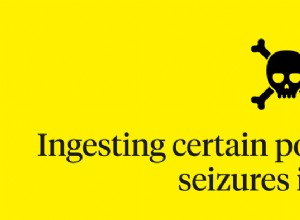
핵심 요약 개의 발작은 매우 드물지만 심각한 의학적 문제의 징후일 수 있습니다. 개의 발작은 독극물, 간 질환, 외상 및 뇌염을 비롯한 여러 가지 원인이 있을 수 있습니다. 치료 옵션에는 수의사가 처방할 수 있는 약물이 포함됩니다. 개가 발작을 일으키면 즉시 수의사에게 진찰을 받는 것이 중요합니다. 개 발작:원인, 증상 및 치료 당신이 애완 동물 주인일 때, 당신의 개가 발작을 일으키는 것을 보는 것은 가장 무서운 경험 중 하나입니다. 대부분의 사람들은 개의 발작을 처리할 준비가 되어 있지 않으며 개가 발작을 일으키는 이유조차
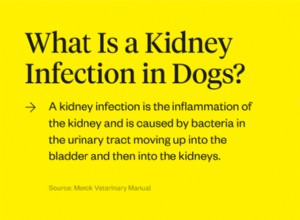
핵심 요약 신장 감염은 강아지에게 고통을 줄 수 있는 일종의 요로 감염(UTI)입니다. 다양한 개의 신장 감염 증상에는 과음, 배뇨 증가 및 고통스러운 배뇨가 포함됩니다. 개의 신장 감염 징후를 이해하면 애완 동물이 필요로 하는 치료와 치료를 받을 수 있습니다. 반려견의 신장 감염 여부와 원인 및 치료 방법에 대해 자세히 알아보세요. 개는 요도, 방광 및 전립선의 감염이나 질병과 같은 여러 요로 문제의 영향을 받을 수 있습니다. 요로 감염 증상은 방광 결석이나 암과 같은 다른 문제를 나타낼 수도 있습니다. 요로 감염으로 인해